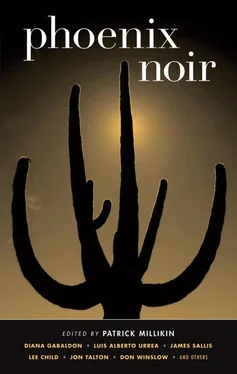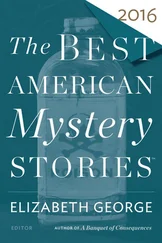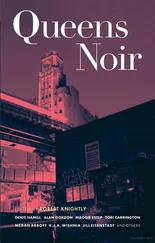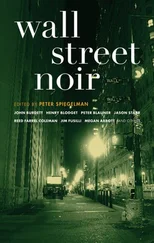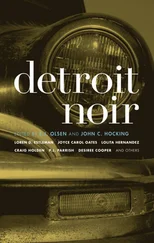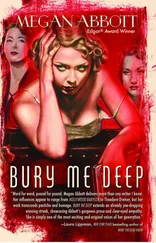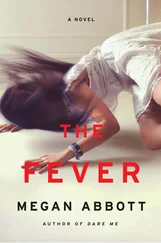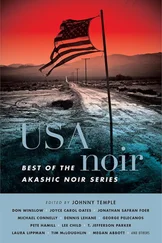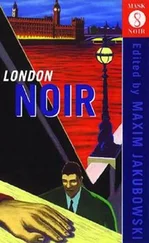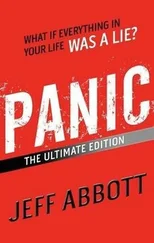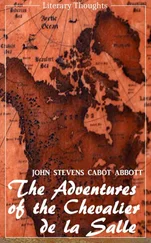Megan Abbott - Phoenix Noir
Здесь есть возможность читать онлайн «Megan Abbott - Phoenix Noir» весь текст электронной книги совершенно бесплатно (целиком полную версию без сокращений). В некоторых случаях можно слушать аудио, скачать через торрент в формате fb2 и присутствует краткое содержание. Город: New York, Год выпуска: 2009, ISBN: 2009, Издательство: Akashic Books, Жанр: Детектив, на английском языке. Описание произведения, (предисловие) а так же отзывы посетителей доступны на портале библиотеки ЛибКат.
- Название:Phoenix Noir
- Автор:
- Издательство:Akashic Books
- Жанр:
- Год:2009
- Город:New York
- ISBN:978-1-933354-85-9
- Рейтинг книги:5 / 5. Голосов: 1
-
Избранное:Добавить в избранное
- Отзывы:
-
Ваша оценка:
- 100
- 1
- 2
- 3
- 4
- 5
Phoenix Noir: краткое содержание, описание и аннотация
Предлагаем к чтению аннотацию, описание, краткое содержание или предисловие (зависит от того, что написал сам автор книги «Phoenix Noir»). Если вы не нашли необходимую информацию о книге — напишите в комментариях, мы постараемся отыскать её.
Phoenix Noir — читать онлайн бесплатно полную книгу (весь текст) целиком
Ниже представлен текст книги, разбитый по страницам. Система сохранения места последней прочитанной страницы, позволяет с удобством читать онлайн бесплатно книгу «Phoenix Noir», без необходимости каждый раз заново искать на чём Вы остановились. Поставьте закладку, и сможете в любой момент перейти на страницу, на которой закончили чтение.
Интервал:
Закладка:
Phoenix Noir

Introduction
Sunshine is the new noir
Phoenix is a young city, even by Arizona standards. The desert metropolis, easily the largest in the Southwest today, wasn’t established until 1867, much later than Tucson, Prescott, and other Arizona towns. As the legend goes, fortune-seeker and former Confederate soldier Jack Swilling noticed the ruins of the extensive Hohokam canal system while passing through the Salt River Valley and recognized the economic potential in getting the irrigation ditches up and running again. Centuries earlier, the Hohokam Indians had disappeared, no one really knows why, but the elaborate canal system they left behind provided the foundation upon which a new city would arise. Swilling battled alcoholism and opiate addiction and would later die in Yuma Territorial Prison under suspicion of highway robbery (he was posthumously cleared of the charge).
Although historians debate whether Swilling or fellow pioneer Darrell Duppa first named the town “Phoenix,” the idea it evoked, a new civilization rising out of the ashes of a previous culture, is revealing. It implied new beginnings, a place where hard-working young families from the East could start over anew. Of course, it wasn’t always such a great deal for the nearby Pima and Maricopa Indians.
Early boosters promoted Phoenix as a desert paradise, a lush resort town where health-seekers could enjoy the benefits of clean dry air and warm winter weather. The burgeoning city was quickly so infested with “lungers” — people suffering from tuberculosis and other respiratory ailments — that alarmed citizens pressured advertisers to downplay the palliative effects of the environment. Magazine ads from the ’40s and ’50s show squeaky clean white families enjoying the “relaxed pace” of desert living: children playing in the sunshine, Dad practicing his golf swing or sipping a highball by the swimming pool.
From the very beginning, Phoenix has always had a darker side. It is a city founded upon shady development deals, good ol’ boy politics, police corruption, organized crime, and exploitation of natural resources. Close proximity to the Mexican border makes the city a natural destination spot for illegal trafficking of all kinds — narcotics, weapons, humans. These days, “America’s Toughest Sheriff” Joe Arpaio routinely makes headlines for his vigilante-style hunting of illegal aliens and his casual disregard of human rights. And he keeps getting reelected.
Modern-day Phoenix is a textbook case of suburban sprawl gone unchecked. Endless cookie-cutter housing developments, slapped up on the cheap, metastasize outward into the desert, soaking up energy and water that we don’t really have. All of that concrete and asphalt traps the heat, raising temperatures to apocalyptic extremes. During the summer, these “heat bubbles” can be lethal (during one record-breaking month in 2004, fourteen people died from heat exposure, most of them homeless).
The city recently overtook Philadelphia to become the fifth largest city in the country, and the Phoenix metro area now rivals Los Angeles County in size. As in all major cities, the gulf between Phoenix’s haves and have-nots continues to widen with the steady decline of the middle class. The affluent northeast valley — Scottsdale, Paradise Valley, Carefree — has little in common with the sunburned working-class neighborhoods of South Phoenix and much of the west valley, though the developers are trying to change that with gentrification. The population of the city continues to grow and morph, but the legacy of the early ward system, in which much of the political representation resided in the wealthier — and whiter — first and second wards, lives on to this day.
What does all this mean? Crime, and lots of it. The stories collected in this anthology provide a revealing glimpse of a dark underbelly that the tourists rarely see. Novelist and veteran journalist Jon Talton provides a masterly portrayal of WWII-era Phoenix, back when The Deuce, our old skid row, was in its heyday and the city’s corrupt power structure already firmly entrenched. Edgar Award — winning author Megan Abbott offers a stylish interpretation of the notorious Bob Crane murder, and brilliantly captures the mellow, sun-baked vibe of Scottsdale during the 1970s. Diana Gabaldon takes the lid off contemporary Scottsdale with a dark and sordid tale combining such disparate elements as squirrel genocide, an illegal orchid smuggling operation, and a murdered Welsh botanist. Investigative reporter Robert Anglen gives us a tour de force of noir depravity about a career loser from East Mesa who is forced to live his miserable life... backwards. Up-and-coming Phoenix scribe Kurt Reichenbaugh delivers the goods with a lean and nasty tale of betrayal along downtown’s storied Grand Avenue. Longtime Phoenicians will dig Gary Phillips’s contribution, in which L.A. detective Ivan Monk comes to town to investigate some loose ends surrounding the early-’70s murder of a local soul singer. The story was inspired by the real-life slaying of Arlester “Dyke” Christian of funk/R&B group Dyke and the Blazers, whose big hit “Funky Broadway” few realized was based on the main drag in South Phoenix. And then there’s Navajo writer Laura Tohe’s bad-ass riff on the femme fatale convention when her womanizing protagonist meets his match with a lady who just ain’t human. This is but a sampling of the dark and diverse tales you’ll find in Phoenix Noir .
I hope you enjoy this collection. The stories represent our city in all of its contradictory glory, the good and the bad, urban blight and stark natural beauty, everything jumbled together and served up smokin’ hot, just the way we like it.
Patrick Millikin
Phoenix, AZ
July 2009
Part I
The big heat
Bull
by Jon Talton
Downtown
I should have been suspicious when Logan said it was a routine job. It wasn’t that there were no routine jobs, only that Logan lied routinely. He was a short man with toad lips and a head that was bald and blotched except for a small tuft of dark hair just above his forehead. Always sitting behind his desk made him appear even shorter.
“Get out to Twenty-seventh Avenue, know where it is?”
He knew I did. I was one of the few people who had actually been born in Phoenix. I tamped out my Lucky Strike in the big ashtray on his desk. “It’s just fields out there.”
“Yeah, well, they found a foot at milepost 903.”
That sounded pretty routine. People fell under trains and lost things. It had been a lot worse a few years ago, during the Depression, with all the bums and alkie stiffs.
“The Golden State will drop you off.”
My suspicion made me light up another cigarette. “The Golden State Limited is going to slow down to let a bull get off two miles from here?”
He pulled the cigar from his mouth. A string of saliva kept it tethered to his fat lips.
“ Bull . I hate that shit. You’re a special agent for the Southern Pacific Railroad. Have some pride.”
I took a drag and drew it down to my shoelaces. I walked to my desk, opened the drawer, and pulled out my Colt .45 automatic, taking my time about slipping on the shoulder holster and replacing the jacket.
“Go, you son of a bitch!” he hollered, spitting tiny tobacco leaves across the room. At the door, I heard his voice again: “And be on good behavior for a change. Got it?”
Читать дальшеИнтервал:
Закладка:
Похожие книги на «Phoenix Noir»
Представляем Вашему вниманию похожие книги на «Phoenix Noir» списком для выбора. Мы отобрали схожую по названию и смыслу литературу в надежде предоставить читателям больше вариантов отыскать новые, интересные, ещё непрочитанные произведения.
Обсуждение, отзывы о книге «Phoenix Noir» и просто собственные мнения читателей. Оставьте ваши комментарии, напишите, что Вы думаете о произведении, его смысле или главных героях. Укажите что конкретно понравилось, а что нет, и почему Вы так считаете.
